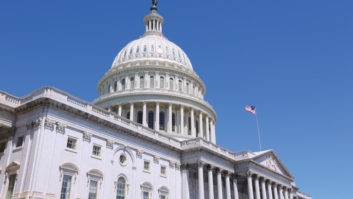The Federal Communications Commission has adopted final rules to allow FM boosters to originate programming for three minutes an hour.
The change will allow stations to deploy the geotargeting system called ZoneCasting. Earlier this year the commissioners began to allow such operation on a temporary, experimental basis. They now have approved the final rules, again unanimously.
“Our action today — championed by Commissioner Starks and Commissioner Carr — provides FM broadcasters with the expanded opportunity to use boosters to customize hyper-local content to different parts of their service area,” Chairwoman Jessica Rosenworcel said in a statement.
“This means the potential for more diverse content. It also means a new way to engage small businesses with advertising opportunities. It gives them a chance to innovate and grow their audiences at a time when they face more competition for our attention than ever before.”
[Related: “Rosenworcel Will Leave the FCC in January“]
We reported recently on the details of this expected vote (read that story).
Stations that originate content on boosters will have to file a quarterly public service certification.
The order also lays out steps that broadcasters will use to notify the commission, which must be done at least 15 days in advance.
It provides procedures to predict and address potential interference before construction, and sets a 25-booster cap on the number of such boosters a single station may operate. It also sets out procedures to predict and avoid potential interference before construction.
You can read the order here.
State Emergency Communications Committees will be required to update their state EAS plans to indicate whether any of the monitoring sources in the assignment matrix are primary stations using program-originating boosters, and whether the boosters will simulcast the primary or go off-air during periods when they are not originating programming.
Broadcasters that use ZoneCasting will need to follow political advertising rules on the boosters.
While the FCC hasn’t endorsed any one technology and these rules theoretically would apply to any such system, in practice they regulate the use of the ZoneCasting system from GeoBroadcast Solutions. The company issued a statement. “The team at GeoBroadcast Solutions would like to thank the commission for their action to level the playing field for local broadcasters in an increasingly competitive market. This will allow broadcasters and advertisers alike to take advantage of tools that have been available to other platforms for years. We are proud to play a part in the future of radio.”
Early adopters
Several broadcasters have begun the process by applying for booster construction permits, but only one so far has applied for experimental authority for program origination. Radio Activo 2 plans to use three boosters on KADD(FM) in St. George, Utah.
Even after the April vote, the National Association of Broadcasters tried to convince the commission that geotargeting is a bad concept that will hurt small broadcasters, especially Class A FM stations on the fringes of large markets. NAB worries that large broadcasters will use the technology to capture local advertising from smaller stations. It also said signal disruption problems are inevitable.
NAB asked the FCC to limit self-interference issues by adopting a uniform synchronization standard, but the FCC chose not to include one because “broadcasters have a strong economic incentive to synchronize in the manner most effective to their own particular location and system design in order to provide the best listener experience.” (Read more on that story.)
[Find the rest of our stories covering the geo-targeting debate here]







